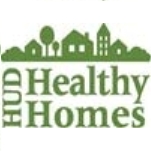Congress passed the
Residential Lead-Based Paint Hazard Reduction Act of 1992 (PDF), also known as Title X. This law helped to protect the public from lead exposure through paint, dust and soil, and Section 1018 of this law required HUD and the Environmental Protection Agency (EPA) to gather information about lead-based paint and potential health hazards before the sale or lease of any housing built before 1978. This resulted in increased safety for buyers and renters of housing built before 1978. According to the law, they are to receive information that allows them to protect themselves from lead-based paint exposure.
- The Programs Division (PMAD), which manages OHHLHC’s lead-based paint regulations, provides outreach to the general public and oversees technical studies on the effects of lead exposure on human health.
- The Regional Management and Technical Services Division, which assists recipients of OHHLHC grants and stakeholders with program and technical support. As part of HUD’s field offices, these employees serve as regional contacts for all activities.
- The Lead Programs Enforcement Division which ensures regulatory compliance for the HUD’s lead-based paint policies by issuing the Lead-Based Paint Disclosure Rule and the Lead Safe Housing Rule.
- The Grants Services Division, which assists with administrative needs and provides oversight for all of OHHLHC’s grants and cooperative agreements.
- The Policy and Standards Division, which is responsible for developing healthy homes guidelines along with standards for reducing exposure to lead-based paints. This division also oversees all of the agency’s research studies and provides technical assistance for OHHLHC and HUD policies going forward.
- City of Phoenix - $3,000,000
- Esperanza Community Housing Corporation - $975,000
- City of Los Angeles - $7,500,000
- Riverside County, Dept. Of Public Health - $3,000,000
- San Diego Housing Commission - $7,000,000
- City and County of Denver - $1,799,168
- City of New Britain - $3,000,000
- City of New Haven - $3,000,000
- City of Waterbury - $3,000,000
·
City of Lynchburg - $2,998,991
NAACP Questions Sludge Study Methods
(by Dennis O’Brien, Baltimore Sun)
Dave Jacobs served as the Director of the Office of Healthy Homes and Lead Hazard Control (OHHLHC) from 1995 to 2004. He was reassigned to a special assistant post in the Office of Community Planning and Development in 2004 by HUD Secretary Alphonse Jackson.
- Table of Contents
- Overview
- History
- What it Does
- Where Does the Money Go
- Controversies
- Suggested Reforms
- Comments
- Leave a comment


- Latest News
- D.C. Public Schools will Teach all Second-Graders to Ride a Bike
- New Rule in Germany Limits Sales of Sex-Themed E-Books to 10pm to 6am
- What Happened to the 6-Year-Old Tibetan Boy the Chinese Government Kidnapped 20 Years Ago?
- U.S. Ambassador to Turkey Photoshops his Hair Color to Mock Turkish Mayor
- Mystery Artist Calls Attention to Unfixed Potholes by Drawing Penises around Them
Congress passed the
Residential Lead-Based Paint Hazard Reduction Act of 1992 (PDF), also known as Title X. This law helped to protect the public from lead exposure through paint, dust and soil, and Section 1018 of this law required HUD and the Environmental Protection Agency (EPA) to gather information about lead-based paint and potential health hazards before the sale or lease of any housing built before 1978. This resulted in increased safety for buyers and renters of housing built before 1978. According to the law, they are to receive information that allows them to protect themselves from lead-based paint exposure.
- The Programs Division (PMAD), which manages OHHLHC’s lead-based paint regulations, provides outreach to the general public and oversees technical studies on the effects of lead exposure on human health.
- The Regional Management and Technical Services Division, which assists recipients of OHHLHC grants and stakeholders with program and technical support. As part of HUD’s field offices, these employees serve as regional contacts for all activities.
- The Lead Programs Enforcement Division which ensures regulatory compliance for the HUD’s lead-based paint policies by issuing the Lead-Based Paint Disclosure Rule and the Lead Safe Housing Rule.
- The Grants Services Division, which assists with administrative needs and provides oversight for all of OHHLHC’s grants and cooperative agreements.
- The Policy and Standards Division, which is responsible for developing healthy homes guidelines along with standards for reducing exposure to lead-based paints. This division also oversees all of the agency’s research studies and provides technical assistance for OHHLHC and HUD policies going forward.
- City of Phoenix - $3,000,000
- Esperanza Community Housing Corporation - $975,000
- City of Los Angeles - $7,500,000
- Riverside County, Dept. Of Public Health - $3,000,000
- San Diego Housing Commission - $7,000,000
- City and County of Denver - $1,799,168
- City of New Britain - $3,000,000
- City of New Haven - $3,000,000
- City of Waterbury - $3,000,000
·
City of Lynchburg - $2,998,991
NAACP Questions Sludge Study Methods
(by Dennis O’Brien, Baltimore Sun)
Dave Jacobs served as the Director of the Office of Healthy Homes and Lead Hazard Control (OHHLHC) from 1995 to 2004. He was reassigned to a special assistant post in the Office of Community Planning and Development in 2004 by HUD Secretary Alphonse Jackson.
Comments


- Latest News
- D.C. Public Schools will Teach all Second-Graders to Ride a Bike
- New Rule in Germany Limits Sales of Sex-Themed E-Books to 10pm to 6am
- What Happened to the 6-Year-Old Tibetan Boy the Chinese Government Kidnapped 20 Years Ago?
- U.S. Ambassador to Turkey Photoshops his Hair Color to Mock Turkish Mayor
- Mystery Artist Calls Attention to Unfixed Potholes by Drawing Penises around Them





Comments